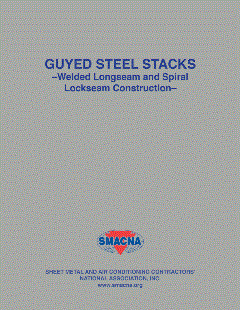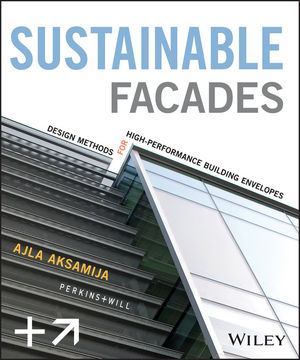Tariff Talk
Steel is the infrastructure of the duct fabrication industry, which is why it makes sense for us to keep an eagle eye on all the factors that influence its price and availability to duct manufacturers. In order to kick off this new section, we called on Wood Mackenzie — a global energy, chemicals, renewables, metals and mining research and consultancy group — to give us a five-point analysis on how a burgeoning tariff-fueled trade war between the U.S. and China will affect materials such aluminum, copper, steel, nickel and the global economy.
Economic impact of a trade war
By Wood Mackenzie Principal Economist, Jonathan Butcher
“The (steel) tariffs introduced in 2018 had a clear and negative impact. There was a lag before the effects were realized, but China trade data showed a fall in volumes from the end of 2018 much greater than normally occurs at that time of year. This was not limited to China-US trade; there were clear spill-overs to other economies.
“The U.S. economy also suffered; a detailed study by Princeton University and the US Federal reserve showed that 2018 tariffs did not result in exporters lowering prices to offset. Instead, the bill has been paid by U.S. consumers and companies. Also, the losses to consumers were greater than the new tariff revenues for the government. In short, the U.S. economy lost out overall.
“We estimate that the negative impact of (the recent) tariff increase could be even greater. The 10 percent tariff of 2018 was not fully passed on to U.S. consumers – importers have absorbed some of the costs through margin compression. A tariff of 25 percent is much harder to ignore, and will cause more displacement and disruption to trade flows.
“In addition, the tariffs of 2018 came while the global economy was growing rapidly. That is no longer the case. The Q1 GDP data for China and the US were propped up by temporary factors; we expect both to slow over the coming months. Growth is also weak in Europe and other key areas. We currently forecast global GDP growth to slow from 2.9 percent in 2018 to 2.6 percent in 2019. Trade war escalation could almost certainly push this down to 2.3-2.4 percent, similar to what we saw in 2016.”
Aluminum
By Wood Mackenzie Principal Analyst, Uday Patel
“The latest increase in U.S. tariffs on Chinese goods is a modification to the original 21st September introduction of a 10 percent tariff on $200 billion worth of Chinese goods. For aluminum and aluminum-contained products, the new tariffs represent more of the same, but at a higher pain threshold for U.S. consumers. For direct aluminum semi-fabricated products, such as sheet, China has been busy redirecting exports to other markets since the introduction of Section 232 and duties on common alloy and foil products. Chinese exporters of semis have also been granted exemptions to the ≠tariffs.
“There is a subtle but important difference between the 10th May deadline and the 21st September deadline. The 10th May deadline was softer. Goods that have already left Chinese ports before 10th May will not be subject to the higher tariffs. According to the formal notice increasing the tariffs, the increase will apply to goods that both 1) enter the U.S. for consumption on or after 12.01 am and 2) were exported to the U.S. after 10th May. In other words, at 12.01 am on Friday, the tariff rate will technically be 25 percent, but only for goods that leave China after that point. Given shipping times of 2-3 weeks, this provides a window for new negotiations. By contrast, in the formal notice implementing the 10 percent tariff rate on 21st September 2018, the tariff applied to goods that entered the U.S. for consumption after the deadline and there was no similar “in-transit” exclusion.”
Copper
By Wood Mackenzie Senior Consultant, Yanting Zhou
“Previous experience shows the escalation of trade tensions always has a negative impact on the copper price, as the market believes that increased tariffs will have a negative impact on global economic activity and, therefore, on copper demand. A trade war between the two largest economies also raises the spectre of a global recession. However, after the announcement today, the copper price actually ticked higher on both the SHFE and LME exchanges. It is believed that some money from the Chinese government has gone into the Chinese stock market to support market sentiment.
“We estimate that China’s indirect copper exports to the U.S. accounts for 3 percent of Chinese total copper consumption per year. The list of $200 billion worth of Chinese goods contains most of the copper intensive products that China exports to the U.S., including products ranging from home appliances to electrical equipment. In our base case, we assume that the 10 percent tariffs on these goods will be maintained through 2019. Under the 10 percent tariff, most of the copper intensive goods from China still have a cost advantage over products from other countries. Therefore, the impact on Chinese copper demand is very limited under our current forecast. However, the 25 percent tariff will make a material difference and we estimate Chinese total copper consumption will drop by 0.5 percent if the tariff is effective on a whole year basis. However, there are only 7 months remaining for 2019. This means that impact on this year’s copper demand will only be around 0.2 percent to 0.3 percent on top of our current forecast of 1.9 percent growth for total copper consumption this year.”
Chris Billman
Market Researcher Manager at Majestic Steel
As someone who started his steel career during the boom times of early 2006, which was quickly followed by the Great Recession in 2008, I have seen the extreme volatility that can affect the steel industry. As a forward-looking company, this extreme volatility led Majestic Steel USA to invest in a Market Research team to help forecast some of the often unseen bumps in the steel market.
Majestic Steel sits in a unique position within the supply chain as it buys from nearly every domestic supplier as well as sells in every major demand sector. This unique perspective allows the research team to have a full view of what is happening in the steel market.
We use this unique network, combined with the tracking of thousands of unique data points to be the experts when it comes to the steel industry, specifically the coated flat rolled space. We track indicators — from raw materials, through the supply chain, to finished products consumed by the consumer — and everything in between.
As a thought-leader in the steel market space, I hope to remove some of the noise and provide a clear understanding of what is currently influencing the market with the hopes of driving better buying and selling decisions throughout the steel industry supply chain.
Steel/Iron ore
By Wood Mackenzie Principal Analyst, Alex Griffiths
“For steel, escalation of tariffs will just add to the bill paid by U.S. consumers.
“Section 301 tariffs against China will impact less than 1 percent of all U.S. pre-sanctioned steel trade – compared to around 98 percent which are covered under Section 232.
“Chinese steel exports to the U.S. have been falling for many years, as a result of a multitude of other duties. Last year, the U.S. imported 0.95 million tonnes of steel from China – or around 3 percent of all U.S. steel imports – compared to 4.6 million tonnes a decade earlier. However, the latest escalation will add to price pressures. The Chinese material that is imported by the U.S. had the highest average value of any imported steel last year – US$2179/tonne compared to an average of US$1091/tonne. This suggests that Chinese steel imported by the U.S. is specialized steel that cannot currently be sourced elsewhere and is, therefore, required by U.S. buyers. Therefore we expect U.S. buyers will continue sourcing those steels from China and absorbing the additional duties themselves. In addition, the U.S. imports around 40 million tonnes of steel through steel-containing goods, some of which come from China. If the increased tariffs stay in place, this will further add to the bill paid by U.S. consumers.
“The U.S. does not import iron ore from China. Therefore, the impact is negligible for iron ore.”
Nickel
By Wood Mackenzie Principal Analyst, Adrian Gardner
“The latest increase in U.S. tariffs on Chinese goods under Section 301 applies to the same range of products identified in the first round back in September..
“No nickel raw materials, such as ferronickel or refined metal, attracted the original 10% tariff and are therefore unaffected by this second round this month. Nickel cadmium and nickel metal hydride battery imports do have the tariff applied but lithium-ion batteries for personal devices or electric vehicles were not selected.
“Most affected will be industrial parts, including stranded stainless steel wire/mesh and stainless steel doors. However, mass-produced intermediates, such as stainless sheet/coil, already have a 25% tariff allocated under Section 232 rules, which were applied globally and will not be doubled-up under Section 301.”
The case for steel tariffs
Commentary: American steel must stay strong
By Thomas Gibson
Repeated surges in unfairly traded steel imports fueled by global excess capacity threaten the long-term viability of the American steel industry. The domestic steel industry directly and indirectly supports nearly two million American jobs and contributes nearly $520 billion to the economy.
Fueled by this massive global overcapacity, estimated to be nearly 600 million tons, dumped and subsidized steel imports have continued to flood into the United States putting our national and economic security interests at further risk — and causing steel plants to be idled and jobs to be lost. Despite efforts to address this import crisis through use of targeted trade remedy laws, imports have continued to increase as excess steel production is easily transshipped through third countries not subject to trade remedy orders. In addition, efforts to address the underlying causes of this crisis through international fora have not produced concrete results to date.
Over the last year, the Commerce Department undertook an investigation under Section 232 of the Trade Expansion Act of 1962 to determine if steel imports threaten to impair national security. The Secretary of Commerce determined that the steel industry is essential to our national security and has been adversely impacted by the significant level of imports in recent years, and recommended that the president take action to limit steel imports through tariffs and/or quotas. The president then imposed a 25 percent tariff on steel imports, with certain countries subject to quotas as an alternative remedy. The objective of these measures is to enhance U.S. national security by permitting the domestic steel industry to return to an economically sustainable level of capacity utilization.
The president’s trade actions are working. Foreign steel imports have decreased 20 percent from April — when the tariffs were enacted — until July, which is the most recently available final import data. And the trade actions are putting steel workers back to work. U. S. Steel has restarted facilities in Granite City, Illinois, which means 800 steel jobs.
With the 232, the steel industry can be on track to maintain our essential contributions to national security and critical infrastructure, and we are grateful for the president’s continued recognition of the steel industry. And steel using industries will benefit from having a stable supply of domestic steel.
We have the capability of producing 20 to 25 million tons of additional steel, using existing capacity, to meet customer needs. However, for products truly unavailable domestically, is a product exclusion process in the 232. But that shouldn’t become a loophole that undermines the effectiveness of the remedy, which is designed to preserve our national security.
We believe that many of the estimates about any potential consumer impact from the Section 232 tariffs have been overstated. The last time that something similar was done, by President Bush in the steel Section 201 case in 2001, the International Trade Commission estimated that there was no significant economic impact on the U.S. economy as a whole — and noted there may have been a small positive economic impact with an increase of 53,000 jobs after the tariffs were ordered.
Going into 2019, trade remains a priority for AISI and our members. However, additionally, transportation and infrastructure — and ensuring that there is a long-term funding to keep the Highway Trust Fund sustainable — is a key policy issue for us this year and we plan to continue our strong advocacy push on that into 2019.
Thomas Gibson is the president and CEO of the American Iron and Steel Institute. For more information about the institute’s initiatives, visit steel.org.
The case against steel tariffs
Steel tariffs are hurting U.S. manufacturers
The North American Association of Food Equipment Manufacturers urges President Trump to take action.
By Joe Carlson.
As president of a manufacturing company in Milwaukee, we began last year full of optimism. Our business, Lakeside Manufacturing, which has been making products and providing jobs in Milwaukee since 1946, was expanding thanks to the hard work of our employees, a growing footprint in the foodservice market and investments in innovative start-ups. We were confident that the Tax Cuts and Jobs Act (TCJA), and the Trump administration’s efforts to reform burdensome regulations, would free up additional resources to invest in our workers and business.
Unfortunately, the Trump administration’s unexpected decision to impose tariffs on imported steel and aluminum could have consequences that are devastating for American manufacturers, like us, for both the raw materials we use and in selling our products here and abroad.
As president of a major trade association that represents more than 550 foodservice equipment and supplies manufacturers across the country, including 29 in Wisconsin, I know our company isn’t alone. These companies create and provide jobs that help sustain their local communities. However, many of them use stainless, carbon steel, and aluminum raw materials to make their products — and that’s become a major problem.
Even companies that use only American-made steel suffer when foreign supply is locked out of the domestic market. The protected American steel industry immediately took advantage, when the tariffs were announced in March, to hike their prices 15 to 25 percent lead times — the time it takes for an order to get delivered — became longer and less predictable within 30 days and worsened throughout the year. Supply chain shortages started to occur by June and became an issue for a large share of our members. American steel mills (overwhelmed with orders due to the dwindling pool of supply), shifted production capacity to their most profitable lines, even if it meant leaving longtime customers without raw material by further extending already long lead times.
All of this happened before the Trump administration’s recently expanded tariffs to include Canada, Mexico and the European Union. The price and supply situation will worsen; with even greater wait times and higher costs that are happening now during the peak season for our members.
Few winners emerge from the United States becoming an island of high steel prices compared to the rest of the world. Domestic steel producers may enjoy higher profits for a time, but in the end, they pay a steep price, too. The foreign companies that buy our products can’t wait around forever for their manufacturing suppliers to fill their orders — nor will they pay higher prices for the US made products they need to serve the growing foodservice industry around the world, reducing demand for domestic steel. They will simply turn to overseas suppliers that make those same finished products for less.
Our company has invested in new brands over the past 10 years and we operate a second manufacturing operation in Tennessee. Taking the chance on those start up brands was not an easy decision, but we knew then that you must stay innovative to compete. Tariffs undermine our ability to do so and expand our business domestically and internationally.
Succeeding in our competitive industry is tough enough without trying to navigate chaos in the supply chain caused by the Administration’s decision to protect the top of the chain (steel producers who employ a total of 140,000 workers) at the expense of the rest of the chain (downstream steel users who employ more than 6.8 million workers). Frankly, the thousands of hard-working employees at our 550-member factories deserve better than that.
President Trump campaigned on the promise to boost American manufacturing. The steel tariffs will have the exact opposite effect and need to be terminated as soon as possible.
Joe Carlson is president of Milwaukee-based Lakeside Manufacturing, Inc., and current president of the North American Association of Food Equipment Manufacturers (NAFEM).








Report Abusive Comment